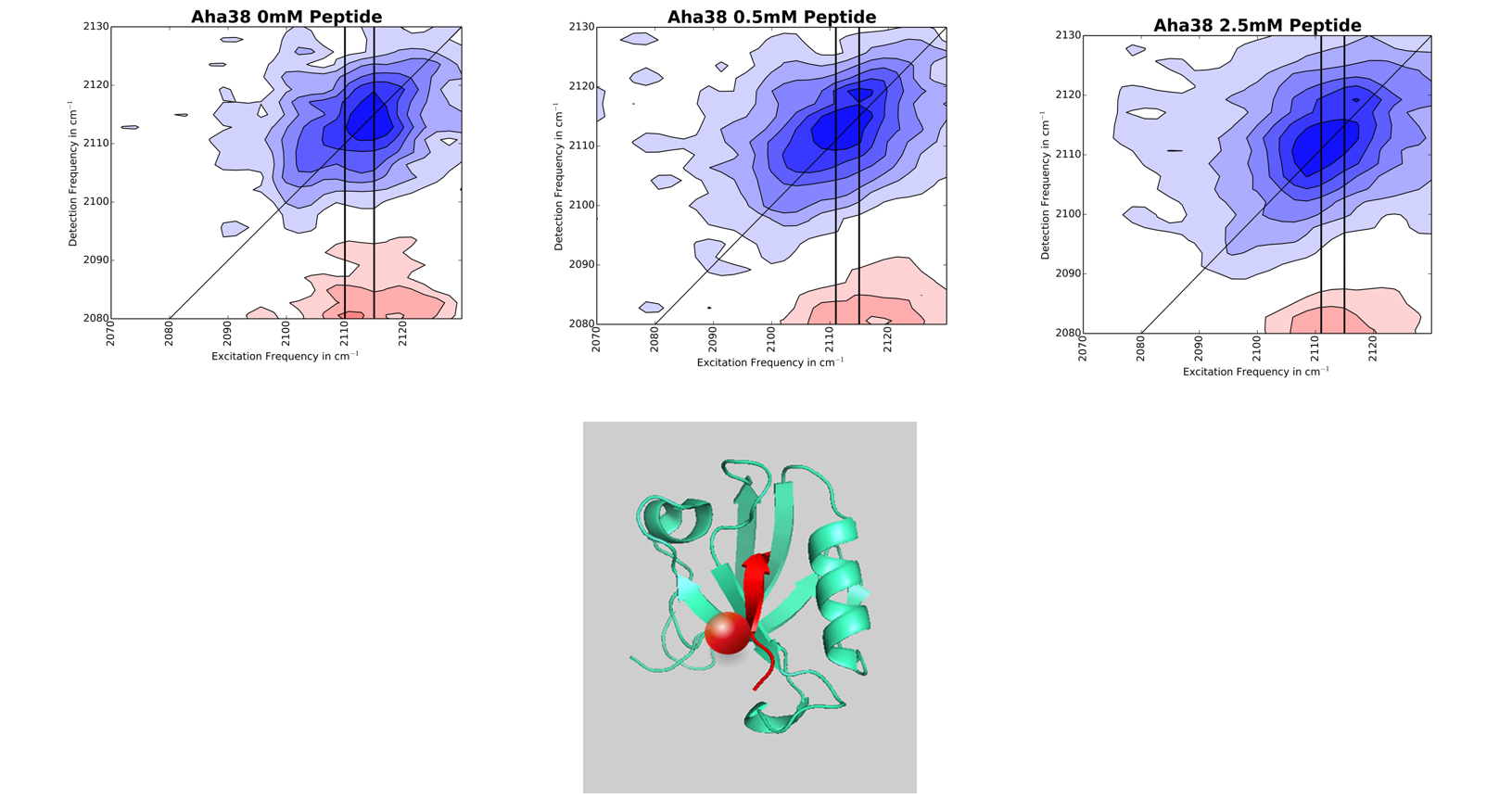Investigation of PDZ2/RagEF peptide interactions by 2D infrared spectroscopy using wild type and modified photoswitchable peptide ligands
Unnatural amino acid azidohomoalanine (Aha) has been shown to be an environment-sensitive infrared probe [1]. In order to monitor protein-ligand interactions between PDZ2 domain of human phosphatase 1E and its peptide ligands, two different mutants of PDZ2 domain were expressed where Aha was incorporated in two specific positions on the opposite sides of the binding groove of the PDZ2 domain. Our results have shown that a 5 wavenumber red shift of the Aha signal occurred as a consequence of peptide binding.

Furthermore, it has been previously shown that covalent bridging of alpha helical peptides by photoswitchable azobenzene molecule linked to two cysteine residues, can induce helix unfolding upon light isomerization of photoswitch [2]. After inducing the conformational change of peptide by photo-isomerization the affinity of Aha labeled PDZ2 for the given peptide may change enough to enable peptide unbinding from the protein in a controlled manner. Here we investigate two conceptually different phtoswitchable peptide candidates, and their binding affinities.
[1] Bloem, Robbert, et al. The Journal of Physical Chemistry B, 2012, 116.46: 13705-13712.
[2] Koziol, Klemens L. et al. Current opinion in structural biology, 2015, 34 , 1-6.